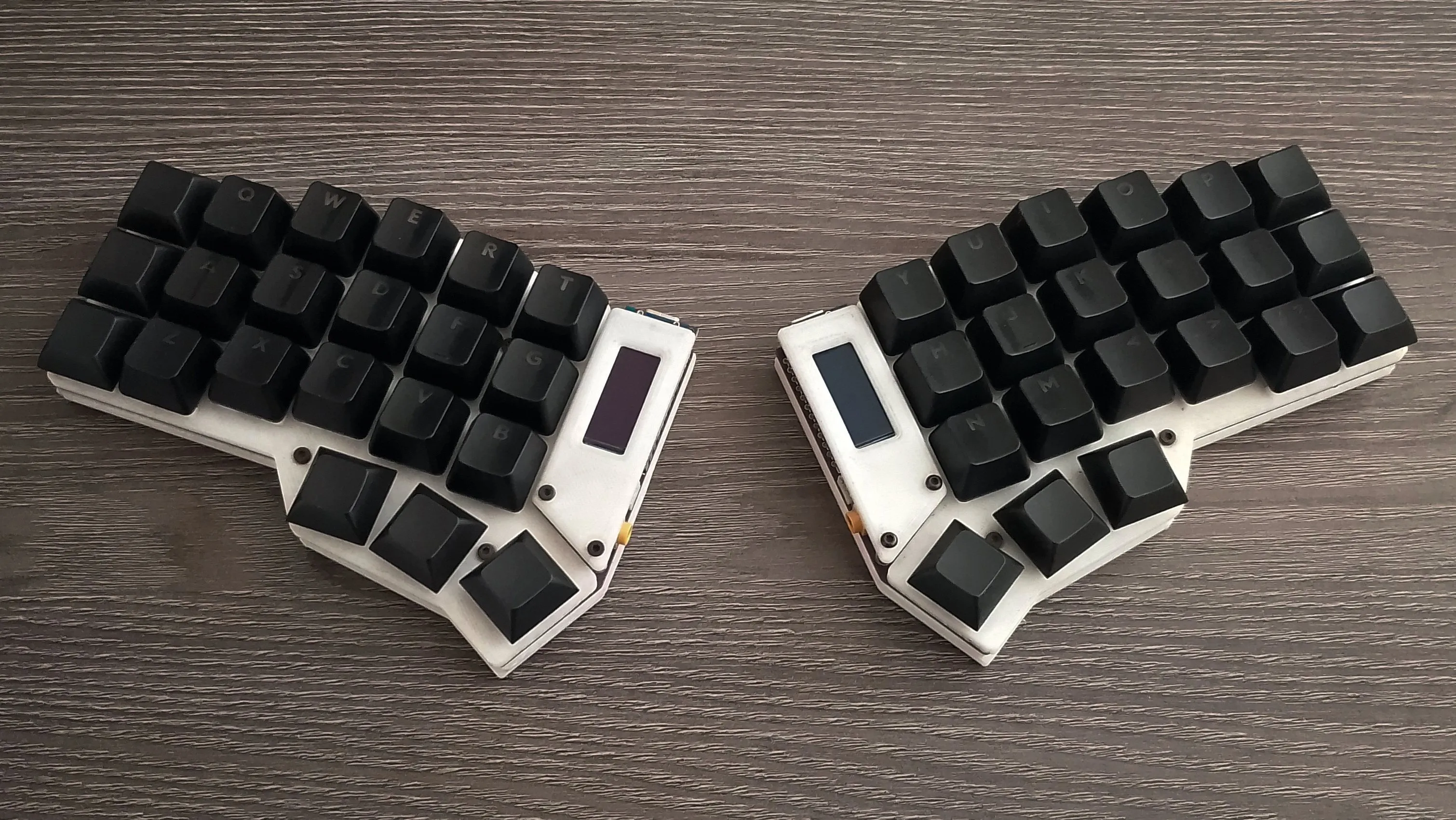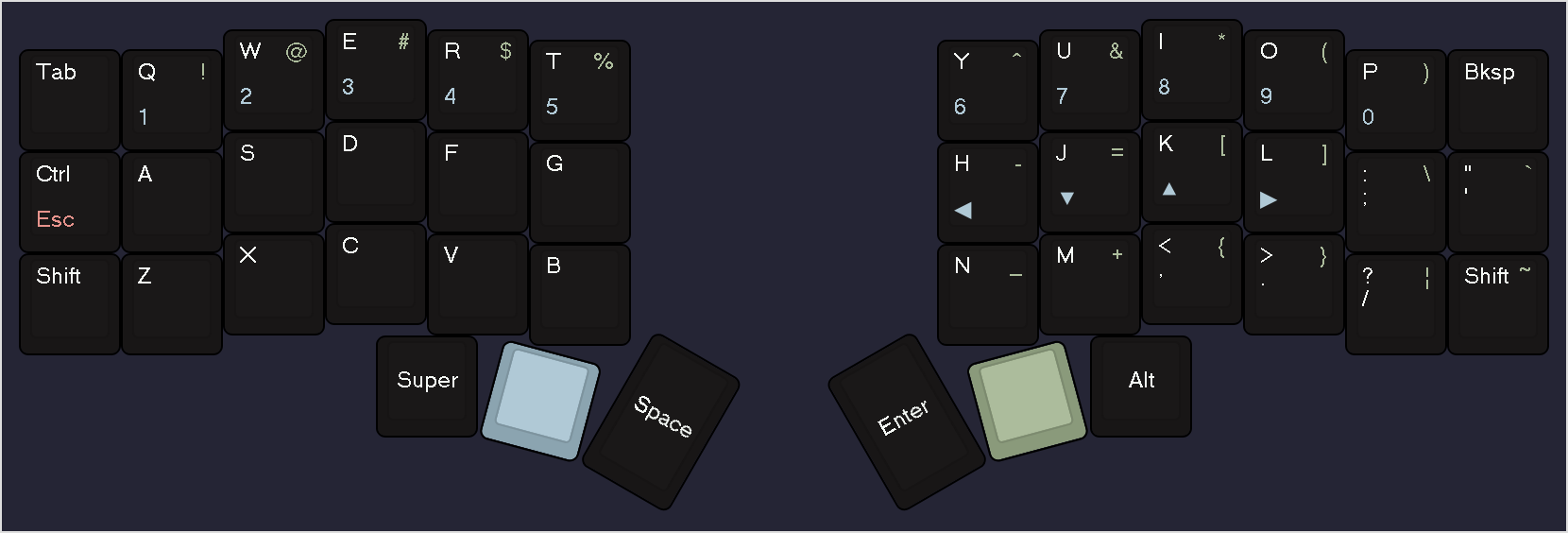Trying out the Corne Keyboard
Published: in 8cf8b63

I’ve been wanting to give ergonomic keyboards a try for while now. Last month I came across a good offer for a second hand Corne, so I didn’t hesitate to buy it. The experience with a split keyboard has been interesting. It felt similar to learning vim for the first time. Strange, uncomfortable, but rewarding nonetheless.
Learning
The first thing that felt weird about the keyboard was, well… the fact that it’s split. The keys were also arranged in straight columns instead of being at an angle. I already knew how to touch type, so it only took me a week or so to get used to the shape of the Corne.
The keyboard I bought came with labelless keycaps. I don’t mind labelless keycaps, however, the keycaps also lacked those little bumps in the F and J keys which cause me to unintentionally shift the position of my hands. I ended up swapping the keycaps for ones from a spare keyboard.
Other thing that bothered me a bit was the small number of keys this keyboard had compared to a regular one. To be able to type numbers or symbols you need to use layers. Layers are similar to how the Fn is used to access media controls in some keyboards. A layer is activated by holding one or more designated keys configured by the user. It seems like layers are one of the things that scare people the most when it comes to trying an ergonomic keyboard.
Finally, as a consequence of the change in layout, the way I type the shortcuts of my most used programs changed significantly. Using things like Sway, Neovim and tmux felt weird. It bothered me a lot at the beginning, but I’m now capable of using the new layout without too much hassle.
Configuration
The Corne is highly configurable. The version I have uses QMK, an open source firmware for custom keyboards. Before diving into writing my own custom layout, I decided to try the QMK default. I got used to most of the layout. The only thing that bothered me was having the Esc on the right side, so I decided to change that.
I also tried VIAL, a fork of QMK that comes with a GUI to configure the keyboard in real time. It allowed me to configure the keyboard without having to flash it every time I wanted to change something. I used it for couple days, but I had problems when trying to configure media keys, so I switch back to QMK.

What’s next?
I’ll be exploring other layouts from time to time. I’m happy with my current setup, but I think I make improve my use of layers. KeymapDB seems like a good website to see how other people configure their QMK keyboards.
I also want to learn how to configure the OLED displays. There are a lot of configuration examples on the internet. I might take some inspiration and see what can I do. It might also be a good opportunity to learn a bit of C.
Building my own keyboard is definitely in the backlog. It’s not unusual to see people in the custom keyboard space crafting their own keyboards. I think that I miss the special part of the process by buying it.